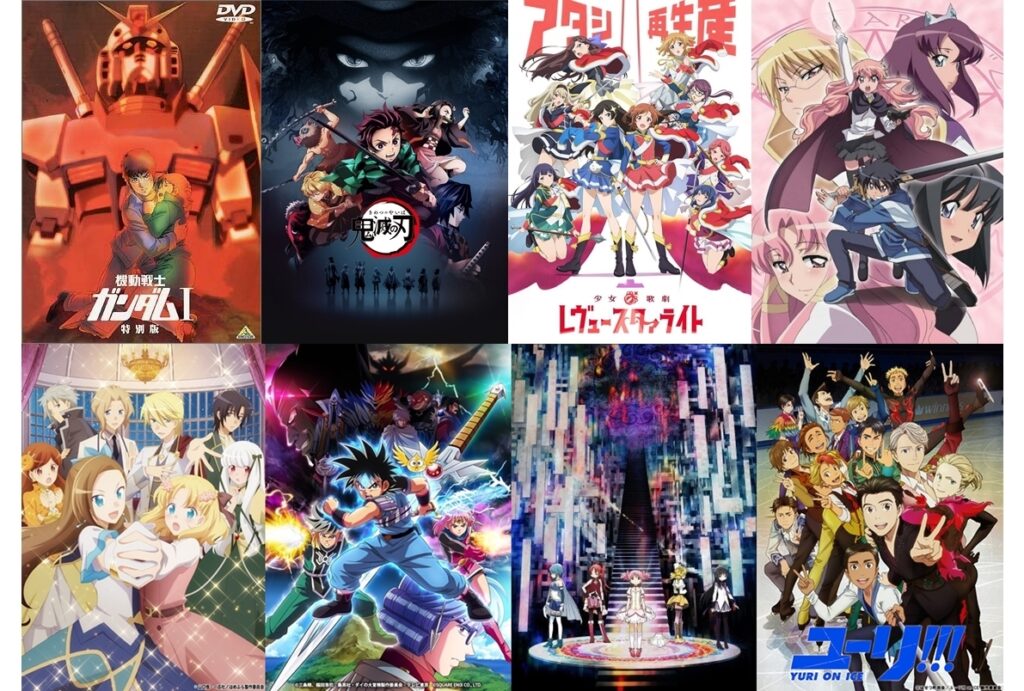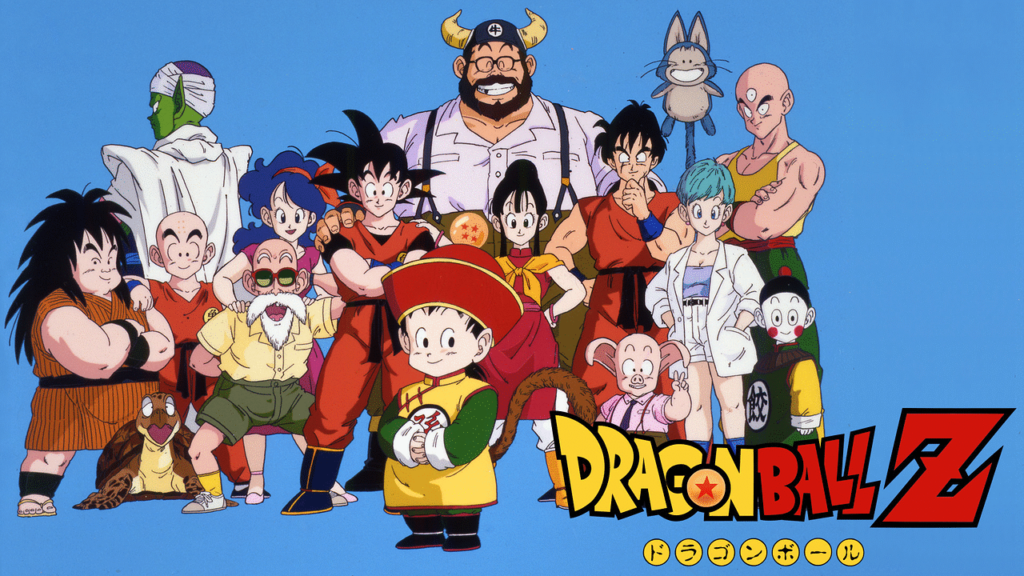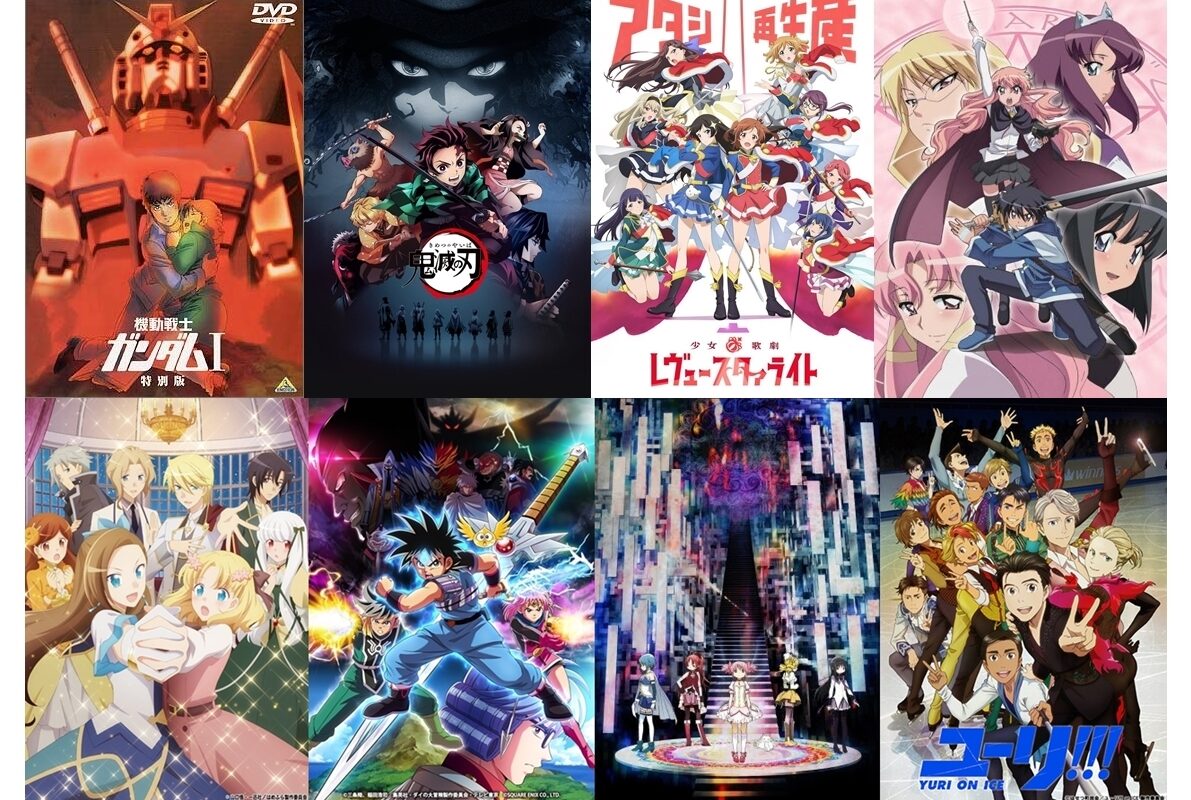Chapter 1: Introduction to anime
I think there are many people who don’t know about anime, which is an important part of Japanese culture, so I would like to introduce it to you.
Anime refers to animation that is broadcast and distributed in various media such as Japanese television programs, movies, and the Internet. Anime is generally produced using hand-drawn or computer graphics, and the range of expression is extremely wide. One of the characteristics of Japanese anime is that it has a lot of content that can be enjoyed by both children and adults. There are also a wide variety of genres and themes, with stories set in a variety of backgrounds and settings, including fantasy, science fiction, romance, action, horror, and everyday life.
One of the characteristics of anime is that it can depict deep storylines and the emotional movements of characters. Because it is animation, it is possible to embody movements and developments that are impossible in the real world, as well as fantasy worldviews. As a result, viewers will be drawn into the charm of anime as a gateway to an unreal world.
Furthermore, anime is a uniquely Japanese culture, and its production techniques and methods of expression are highly praised around the world. In particular, works that pay close attention to detail, such as character designs, background art, and animation movements, are loved by many fans, and their influence is immeasurable, with screenings held at anime events and festivals in Japan and abroad. yeah.
Also, you can’t miss the fusion of anime and music. Music, such as opening and ending theme songs, insert songs, and BGM, is an essential element that makes the world of anime deeper and more appealing. Many artists and musicians create songs for anime works, and they often become hits.
It can be said that anime has a very high value not only as a part of Japanese pop culture, but also as a work of art. Anime, which is created by combining diverse genres, expression methods, and various techniques and art, is a proud part of Japanese culture and will continue to be loved by many people.

Quote (https://www.animatetimes.com/news/details.php?id=1631005116)
Chapter 2: Historical and cultural background
We will tell you how anime has developed in Japan until now, including history and culture.
The origins of anime date back to the early 20th century. Early animation was simple, consisting mainly of short experimental films and stop-motion footage. However, this was the beginning of Japan’s animation industry. After World War II, with the spread of television, anime began to establish itself as a part of popular culture. In the 1960s, many monumental works were created, including Osamu Tezuka’s Astro Boy and Toei Animation’s Magical Girl series.
The 1970s was an era known as the golden age of anime, and works such as Space Battleship Yamato and Mobile Suit Gundam showed that anime was not just entertainment for children, but had deep stories that adults could also enjoy. It became an opportunity to be recognized as a work of art.
From the 1980s to the 1990s, the anime industry made great strides as the economy boomed, technology evolved, and otaku culture flourished. During this period, many works were produced that received extremely high praise both domestically and internationally, including Hayao Miyazaki’s Studio Ghibli films, Neon Genesis Evangelion, and Dragon Ball.
Since the 2000s, with the spread of the Internet and the evolution of digital technology, anime production and distribution methods have changed significantly. With the spread of online streaming services, anime can now be instantly delivered to fans all over the world, and the number of works with global fan bases is increasing.
What has supported the development of anime is not only technology and economics, but also Japan’s unique culture and values. For example, many anime works incorporate themes and backgrounds unique to Japan, such as the changing seasons of Japan, ancient traditions and festivals, and even the simple happiness and human relationships of daily life.
Additionally, anime is a Japanese subculture that is deeply related to manga, games, light novels, etc. Through these media, anime has continued to evolve while receiving new stimuli and influences.
Overall, anime has grown together with Japanese history and culture, and behind it lies the passion and creativity of the Japanese people, as well as their unique aesthetic sense and philosophy. Anime will continue to be loved by people all over the world as part of Japanese culture.

Quote (https://animestore.docomo.ne.jp/animestore/ci_pc?workId=22901)
Chapter 3: Anime in modern times
Let me introduce you to what anime is like in modern Japan.
Anime is an ever-evolving presence in modern Japanese culture. With the introduction of advanced CG technology and the spread of streaming services, anime is diversifying, incorporating expressions and distribution formats that were unimaginable in the past.
Modern anime is not only a form of entertainment, but has also increasingly played a role as a tool for conveying social and cultural messages. For example, many contemporary themes are taken up in anime works, such as LGBTQ+ issues, mental health, family structure, and the worries of young people. As a result, a diverse audience has begun to take an interest in anime, increasing its influence.
Additionally, modern anime is characterized by a diversification of genres. In addition to the once major genres of battle and magical girl, you can now enjoy a wide variety of genres such as reincarnation in another world, daily life, sports anime, musical anime, and more. In particular, things from other worlds have been attracting a lot of attention as a trend in recent years, and many works have been created.
Anime production technology has also evolved dramatically. With the advancement of 3D animation technology, the number of works that pursue different perspectives, movements, and realism from traditional 2D animation has increased. Furthermore, new anime experiences that utilize VR and AR technology are beginning to be provided.
Additionally, anime is gaining popularity not only in Japan but also overseas. In particular, major streaming services such as Netflix and Amazon Prime Video are actively working on producing and distributing anime works, and as a result, anime can now be easily viewed by people all over the world. Through Japanese anime, overseas fans are exposed to and develop a deep interest in Japanese culture and language.
Finally, anime is increasingly collaborating with various fields such as fashion, music, products, and events in modern Japan. Anime culture has permeated every aspect of daily life, with products featuring anime characters, live events with voice actors, and anime-themed cafes.
In this way, modern anime is a diversified and ever-evolving culture that is loved not only by people in Japan but also by people all over the world. We must never forget that behind this is the passion and skill of the anime creators, and the undying love of the viewers.

Chapter 4: Famous works featuring anime
We will introduce some famous works that feature anime.
Anime culture has had a great influence not only in Japan but also overseas. As a result, movies, dramas, and novels have been created that are themed around anime and related culture. Here, I would like to highlight some representative works from among them.
“Otaku’s Video”
An OVA that satirically depicts otaku culture in the late 1980s. This work continues to be loved by many anime fans for its comical portrayal of anime fans, their culture, and daily life.
“Bookstore on Denki Street”
A drama based on an incident that actually happened in Akihabara. The otaku culture of anime and manga is depicted as a background, and the human relationships and events within it are depicted.
“Perfect Blue”
A psychological thriller anime film that deeply delves into the relationship between idols and otakus. It depicts the emotional conflict that occurs between an idol’s humanity and their fans.
“Documentary Film: History of Animation”
A documentary film that deeply explores the history and production process of animation, as well as its cultural background. Contains interviews with many famous anime directors and creators, allowing you to learn about the appeal and depth of anime.
“Anime manager”
A comedy anime depicting the daily life of the president of an anime production company and the behind-the-scenes aspects of anime production. It uses humor to convey the difficulties of producing anime and the current state of the industry.
Although these works are based on anime, they also delve deeply into the culture, people’s feelings, and social background behind it. We can see that anime is not just a form of entertainment, but is deeply connected to people’s lives and culture.
Through these works, you can also understand the enthusiasm and passion of anime fans, and sometimes their unique culture and values. The medium of anime has an impact on many people, and can sometimes bring about social debate and change.
These anime-themed works are a must-see for those who want to know and understand anime culture more deeply. Through their works, you can get a feel for the charm of anime and the culture behind it.
Chapter 5: Summary
This is a summary about anime.
Anime has been a part of Japanese culture for a long time, spreading all over the world. Their appeal ranges from simple entertainment for children to works that depict deep social messages and human conflicts. Anime’s unique method of expression and storytelling captivate many people and continue to be loved across borders.
Through this series of articles, we have deeply explored the multifaceted aspects of anime culture, from the introduction of anime to its history, the current state of anime, and even various works based on anime. Anime has had a great influence not only on the aspect of visual works, but also on society, culture, and even the hearts of individuals.
Anime, which is woven from Japan’s unique sensibilities, values, and historical background, has produced works of diverse genres and themes that touch the hearts of a wide variety of people. It spans all genres, from deep human drama to fantasy, science fiction, romance, and action, and has entertained viewers with a wide variety of content.
Anime has played an extremely important role not only as part of Japanese culture, but also as part of international cultural exchange. In many countries, anime has become a gateway to learning about Japanese culture, and has also been used as a means to understand other cultures. Along with the spread of anime, Japanese music, fashion, and food culture also spread around the world and became loved by many people.
Finally, anime is a culture that is constantly evolving, and will continue to incorporate new techniques and ideas to provide fun and excitement to even more people. As a fan who will continue to follow its charm, I am very excited about the future of anime.
I hope that with the knowledge and information you have learned in the previous chapters, you will be able to understand and enjoy the beautiful Japanese culture of anime more deeply. I am confident that by experiencing the depth and charm of anime and trying new works and genres, the world will expand even further.
